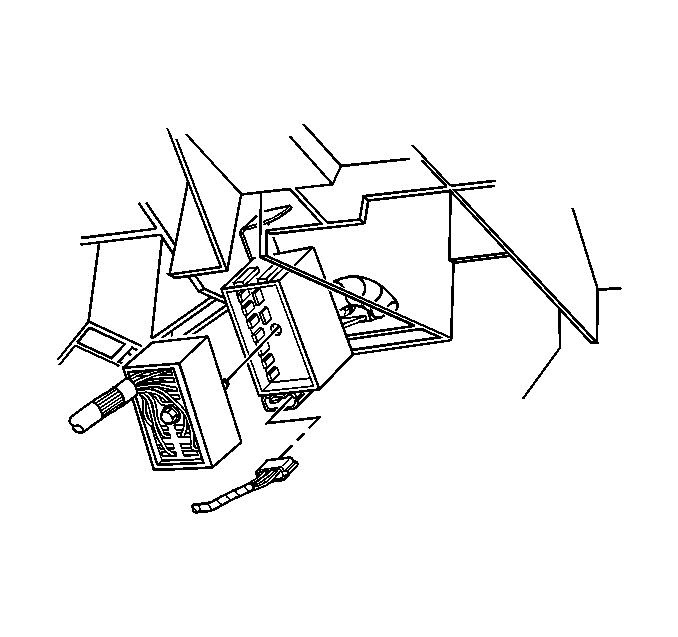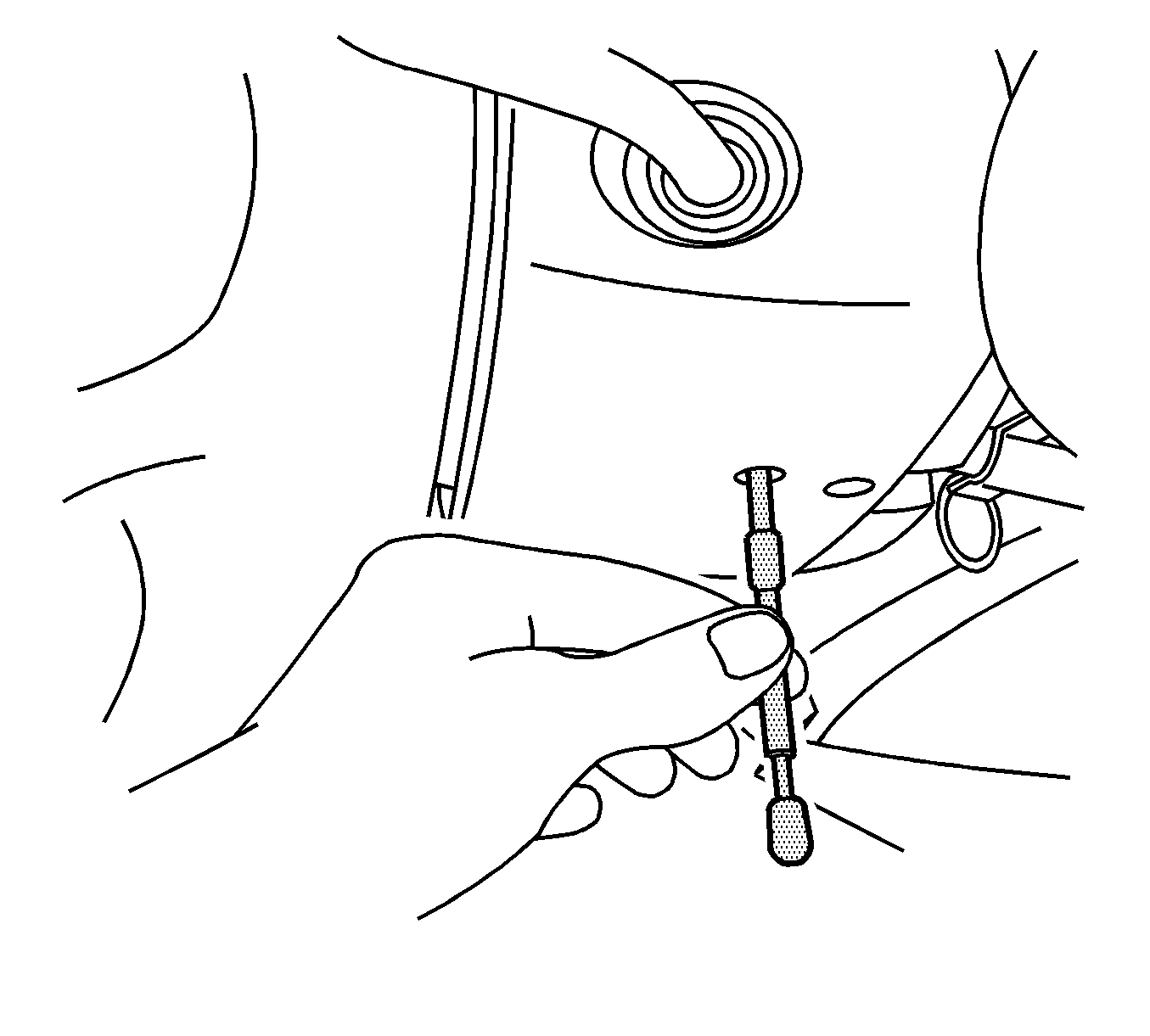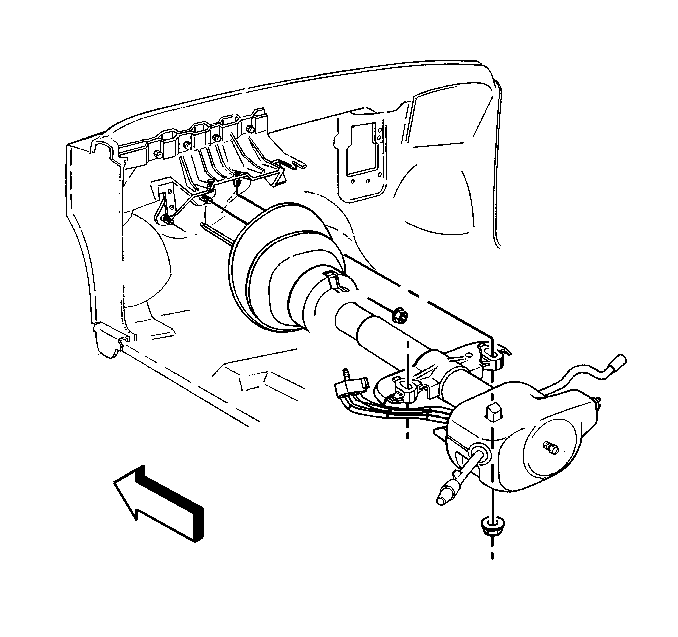Removal Procedure
Notice: Once the steering column is removed from the vehicle, the column is extremely susceptible to damage. Dropping the column assembly on the end could collapse the steering shaft or loosen the plastic injections, which maintain column rigidity. Leaning on the column assembly could cause the jacket to bend or deform. Any of the above damage could impair the columns collapsible design. Do NOT hammer on the end of the shaft, because hammering could loosen the plastic injections, which maintain column rigidity. If you need to remove the steering wheel, refer to the Steering Wheel Replacement procedure in this section.
Notice: The front wheels of the vehicle must be maintained in the straight ahead position and the steering column must be in the LOCK position before disconnecting the steering column or intermediate shaft. Failure to follow these procedures will cause improper alignment of some components during installation and result in damage to the SIR coil assembly.
- Disable the SIR system. Refer to Supplemental Inflatable Restraint Description .
- Remove the knee bolster. Refer to Knee Bolster Replacement in Instrument Panel, Gauges and Console.
- Remove the shift cable from the steering column (column shift only). Refer to Shift Cable Replacement in Automatic Transmission - 4L60-E.
- Lock the steering column through the access hole in the lower steering column shroud using J 42640 .
- Loosen the center screw in order to remove the steering column bulkhead connector.
- Remove the nuts that retain the steering column to the steering column toe plate.
- Remove the nuts that retain the steering column to the steering column upper support bracket.
- Remove the steering column from the vehicle.



Installation Procedure
- Install the steering column to the vehicle.
- Install the nuts that retain the steering column to the steering column upper support bracket.
- Install the nuts that retain the steering column to the steering column toe plate.
- Install the steering column bulkhead connector to the vehicle wire harness.
- Unlock the steering column by removing J 42640 from the steering column lower shroud access hole.
- Install the shift cable from the steering column (column shift only). Refer to Shift Cable Replacement in Automatic Transmission - 4L60-E.
- Install the knee bolster. Refer to Knee Bolster Replacement in Instrument Panel, Gauges and Console.
- Enable the SIR system. Refer to Supplemental Inflatable Restraint Description .

Notice: Use the correct fastener in the correct location. Replacement fasteners must be the correct part number for that application. Fasteners requiring replacement or fasteners requiring the use of thread locking compound or sealant are identified in the service procedure. Do not use paints, lubricants, or corrosion inhibitors on fasteners or fastener joint surfaces unless specified. These coatings affect fastener torque and joint clamping force and may damage the fastener. Use the correct tightening sequence and specifications when installing fasteners in order to avoid damage to parts and systems.
Tighten
Tighten the steering column to steering column upper support bracket
retaining nuts to 30 N·m (22 lb ft).
Tighten
Tighten the steering column to the steering column toe plate retaining
nuts to 30 N·m (22 lb ft).

Tighten
Tighten the steering column bulkhead connector center screw to 6 N·m
(53 lb in).

